Discover 35 hidden attractions, cool sights, and unusual things to do in Beirut (Lebanon). Don't miss out on these must-see attractions: Beirut Souks, Verdun, and National Museum of Beirut. Also, be sure to include Saint George Greek Orthodox Cathedral in your itinerary.
Below, you can find the list of the most amazing places you should visit in Beirut (Beirut).
Table of Contents
Beirut Souks
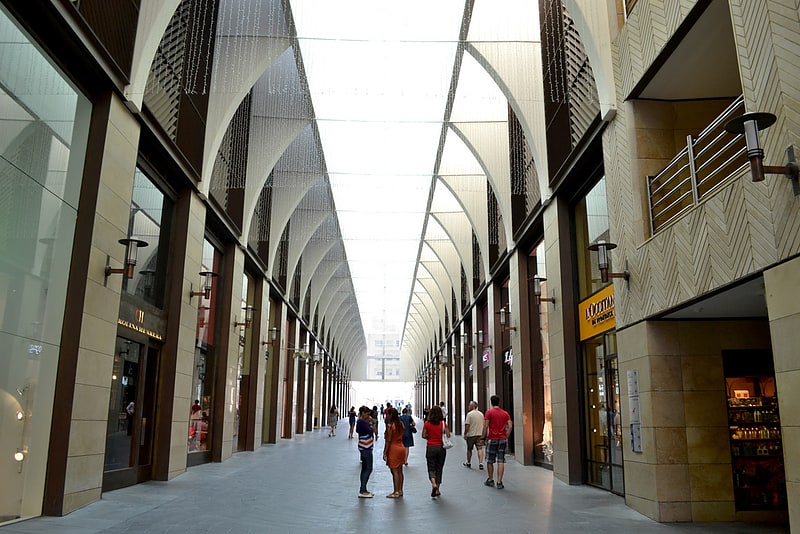
Also known as: أسواق بيروت
Shopping center in Beirut, Lebanon. Beirut Souks is a major commercial district in Beirut Central District. With over 200 shops, 25 restaurants and cafes, an entertainment center, a 14 cinema complex, periodic street markets and an upcoming department store, it is Beirut's largest and most diverse shopping and leisure area. Beirut Souks also features piazzas and public space. Designed in five separate commissions by international and Lebanese architects, Beirut Souks offer 128,000 sq. m of built-up area interspersed with landscaped pedestrian zones.
The souks have historically been at the commercial heart of Beirut. They sustained severe damage during the Lebanese Civil War and were rebuilt by Solidere according to the ancient Greek street grid, maintaining the historic landmarks and pre-war street names.[1]
Address: Souk El Bazerkan, Beirut
Verdun
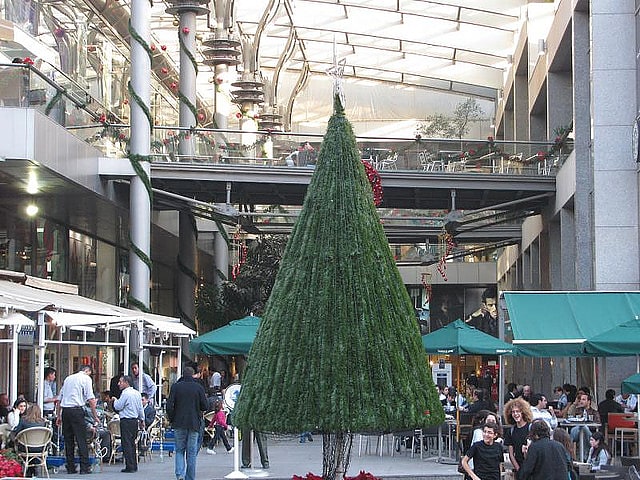
Also known as: الفردان
Street in Beirut, Lebanon. Rue Verdun, or Verdun Street, is an upscale commercial and residential street in Beirut, Lebanon. The street, which is a major shopping center and tourist attraction, was named in honor of the Battle of Verdun during World War I. It is officially named Rachid Karami Street, after Lebanon's late Prime Minister who was assassinated during the Lebanese Civil War.[2]
National Museum of Beirut
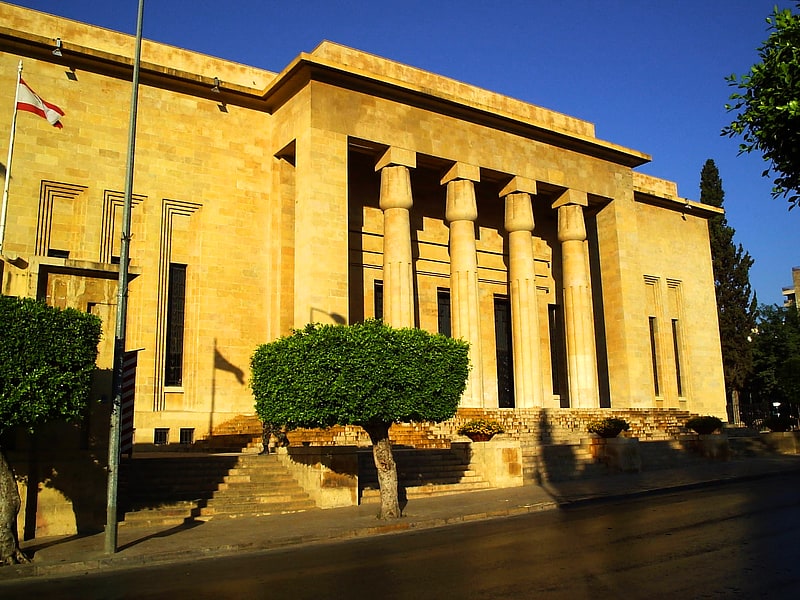
Also known as: متحف بيروت الوطني
Lebanon's history told through exhibits. The National Museum of Beirut is the principal museum of archaeology in Lebanon. The collection begun after World War I, and the museum was officially opened in 1942. The museum has collections totaling about 100,000 objects, most of which are antiquities and medieval finds from excavations undertaken by the Directorate General of Antiquities. About 1300 artifacts are exhibited, ranging in date from prehistoric times to the medieval Mamluk period.
During the 1975 Lebanese Civil War, the museum stood on the front line that separated the warring factions. The museum's Egyptian Revival building and its collection suffered extensive damage in the war, but most of the artifacts were saved by last-minute preemptive measures.
Today, after a major renovation, the National Museum of Beirut has regained its former position, especially as a leading collector for ancient Phoenician objects.[3]
Address: Museum Street, Beirut
Saint George Greek Orthodox Cathedral
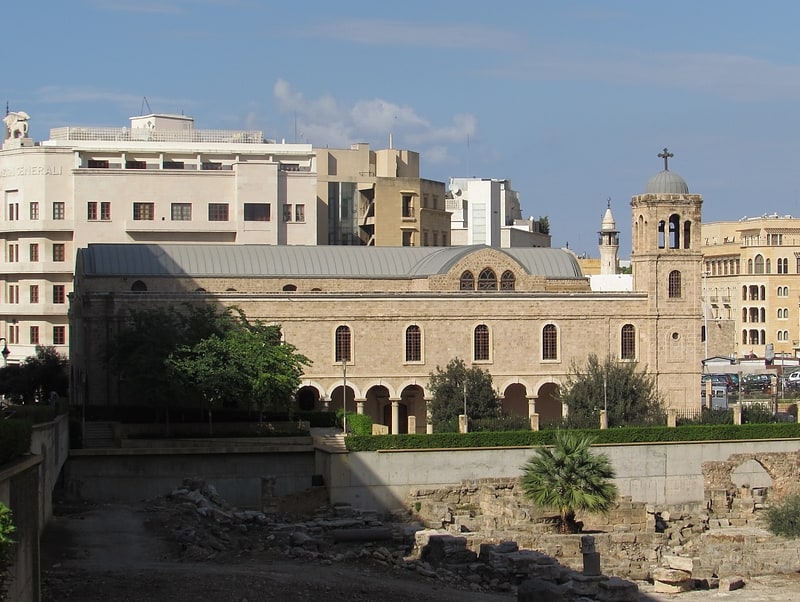
Also known as: كاتدرائية القديس جاورجيوس للروم الأرثودكس
Greek orthodox church in Beirut, Lebanon. Saint George Greek Orthodox Cathedral is the seat of the Greek Orthodox Metropolitan bishop of the Greek Orthodox Archdiocese of Beirut and its dependencies. It is the city's oldest extant church: it has been built over the disappeared Anastasi Romano-Byzantine Cathedral.[4]
Address: Emir Bechir Street, Beirut
Corniche Beirut

Also known as: كورنيش بيروت
Avenue. The Corniche Beirut is a seaside promenade in the Central District of Beirut, Lebanon. Lined with palm trees, the waterfront esplanade has views of the Mediterranean and the summits of Mount Lebanon to the east. Corniche Beirut has its foundation in the Avenue des Français, which was built during the period of the Mandate for Syria and the Lebanon along the seafront that extended from the old town.[5]
Mohammad Al-Amin Mosque
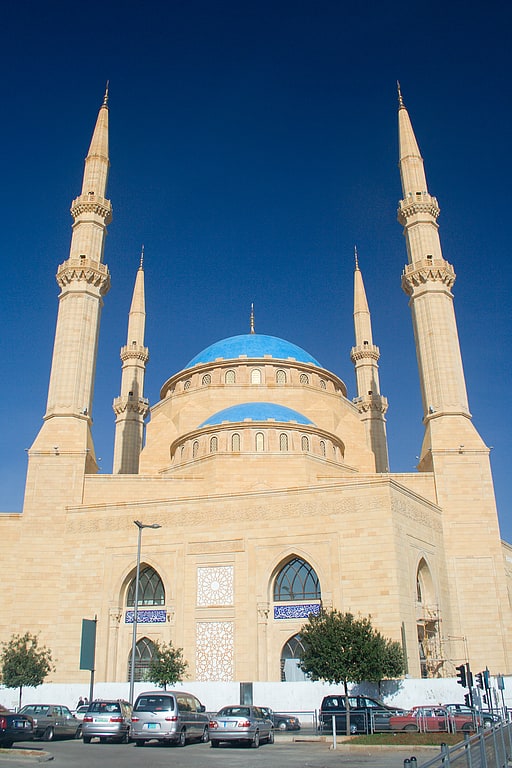
Also known as: جامع محمد الأمين
Modern Ottoman-influenced mosque. The Mohammad Al-Amin Mosque, also referred to as the Blue Mosque, is a Sunni Muslim mosque located in downtown Beirut, Lebanon.
In the 19th century, a Zawiya (prayer corner) was built on this site. Decades of preparation to obtain sufficient land adjacent to the old Zawiya led finally to the building of the new mosque. It was inaugurated in 2008.[6]
Address: Martyrs' Square, Amir Bachir, Beirut
St. George Maronite Cathedral
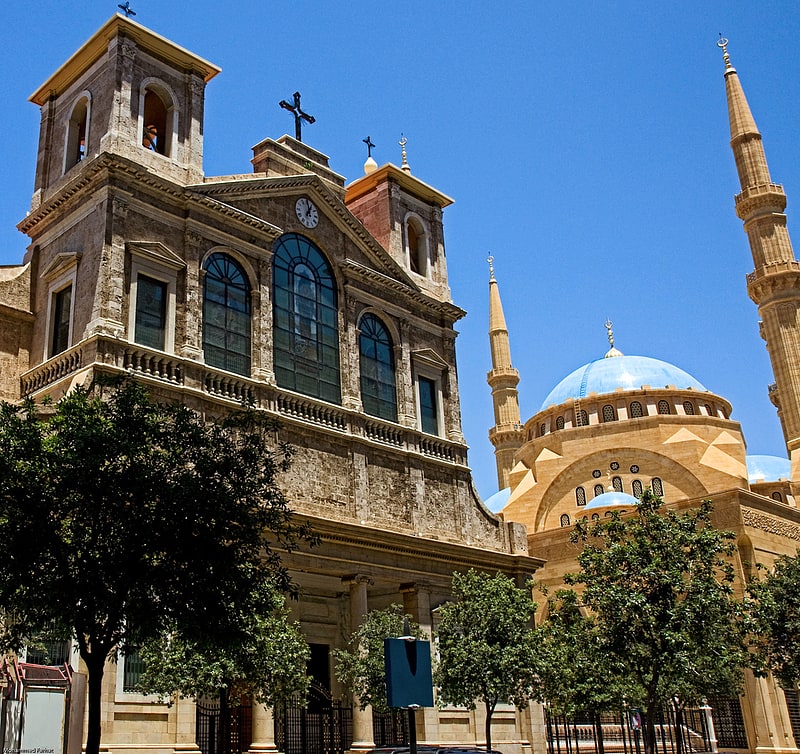
Also known as: كاتدرائية مار جرجس المارونية
Cathedral in Beirut, Lebanon. Saint George Maronite Cathedral is the cathedral of the Maronite Catholic Archeparchy of Beirut, Archdiocese of the city of Beirut, Lebanon. Its construction, with a Neoclassical facade, interior and plan inspired by the Basilica di Santa Maria Maggiore, began in 1884 and ended in 1894.
The cathedral was heavily hit and shelled during the Lebanese civil war and was plundered and defaced. A number of works of art that were looted have since been recovered, including the famous painting by Eugène Delacroix representing Saint George, the patron saint of the cathedral and of the Archdiocese of the city of Beirut. The cathedral was restored after the end of the hostilities and was re-inaugurated by the Maronite Patriarch Nasrallah Boutros Sfeir on 24 April 2000.[7]
Martyrs' Monument
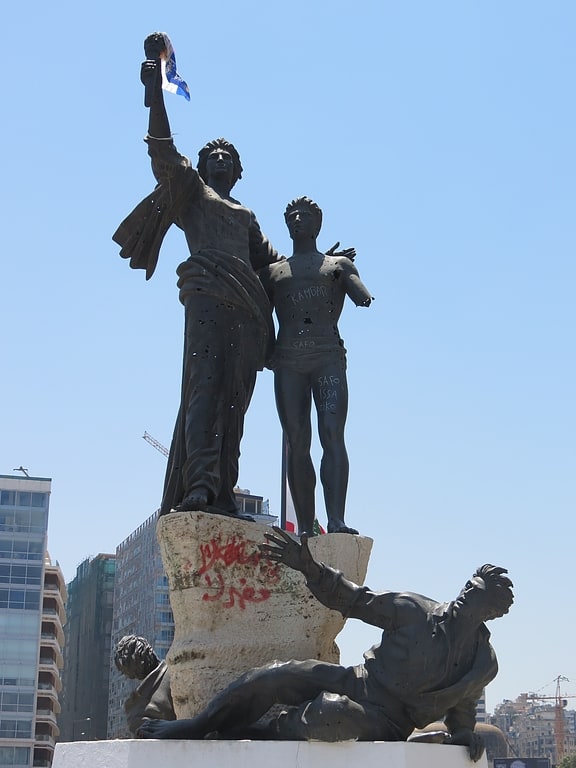
Martyrs' Monument was built to honor the hanging of a cross-confessional group of Lebanese Patriots on May 6, 1916, who had spoken against Turkish rule by Ottoman General Jamal Pasha. It is located at what is now known as Martyrs' Square in the heart of downtown Beirut, Lebanon. It was created by Italian sculptor Marino Mazzacurati, and inaugurated in 1960.[8]
Martyrs' Square

Also known as: ساحة الشهداء
Iconic memorial to nationalist martyrs. Martyrs' Square, historically known as "Al Burj" or "Place des Cannons", is the historical central public square of Beirut, Lebanon.
Like the Martyr's Square in Damascus, it is named after the 6 May 1916 executions ordered by Djemal Pasha during World War I.[9]
Gibran Khalil Gibran Garden
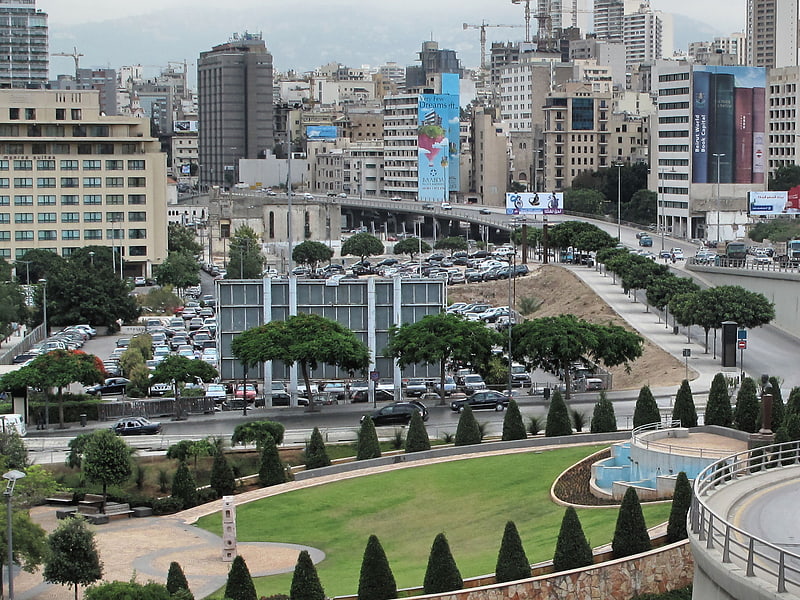
Park in Beirut, Lebanon. The Gibran Khalil Gibran Garden is a 6,000-square-meter public garden in the Centre Ville area of Beirut, Lebanon, facing the UN House, the headquarters of ESCWA, the United Nations Economic and Social Commission for Western Asia.
The garden, which is named in honor of the Lebanese–American writer, poet and visual artist Kahlil Gibran, features two circular lawns, a fountain, and modern sculpture, including a bust of Gibran. The garden is often used as a venue for peaceful and democratic demonstrations and sit-ins.[10]
Roman Baths
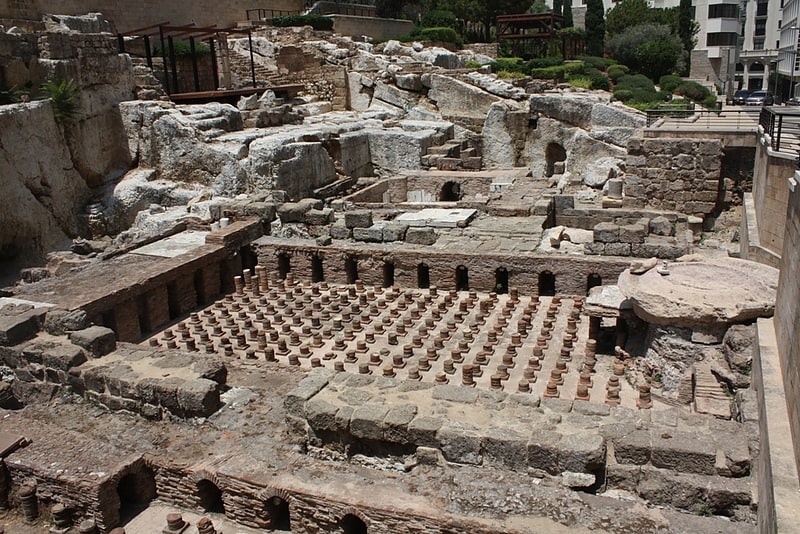
Archaeological museum in Beirut, Lebanon. The Roman Berytus are located in the middle of downtown Beirut, Lebanon between Banks Street and Capuchin Street. The remains of a Roman bath of Berytus now surrounded by government buildings were found and conserved for posterity.[11]
Sursock Museum
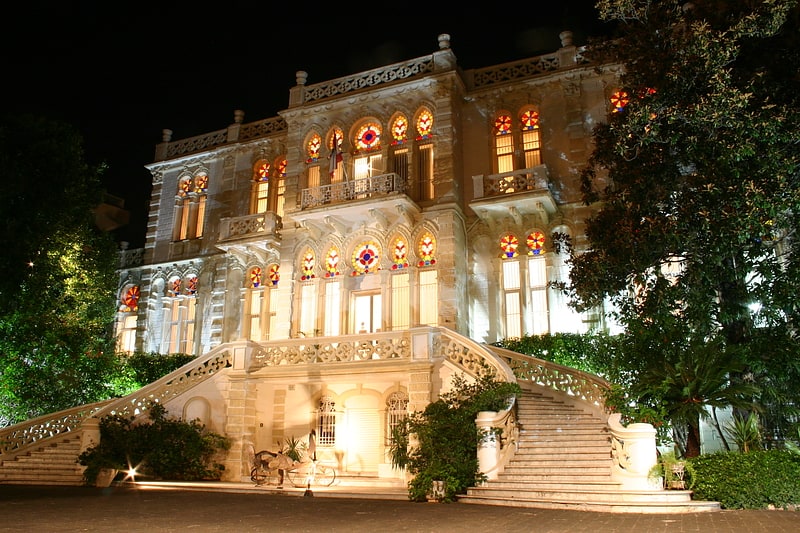
Also known as: قصر سرسق
Modern art museum in a 1912 villa. The Sursock Museum, which is officially known as the Nicolas Ibrahim Sursock Museum, is a modern art and contemporary art museum in Beirut, Lebanon.[12]
Address: Mar Mikhael, Beirut
Rue Spears
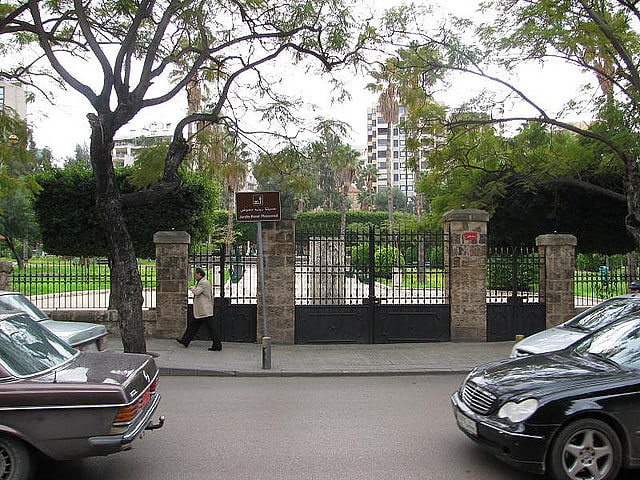
Street in Beirut, Lebanon. Rue Spears is a street in Beirut, Lebanon that was named after British General Edward Spears who in 1941 liaised with General Charles de Gaulle and his Free French movement to liberate the Levant. He was appointed the British minister in Beirut in 1942. Spears would later also urge the Lebanese and Syrians to claim independence from France after being converted to the Arab nationalist vision. Due to his initiatives, Great Britain recognized a de facto independent Lebanon in 1942.
Rue Spears is a one-way street that runs west-east, beginning at the intersection of Rue de Rome and ending at Rue Fakhreddine. René Moawad Garden is located on the street and so is the National Library, National Radio Station, Ministry of Interior, Chamber of Commerce, Future Television studios, and Helem Center, the Middle-East's first gay rights organization.[13]
National Evangelical Church of Beirut
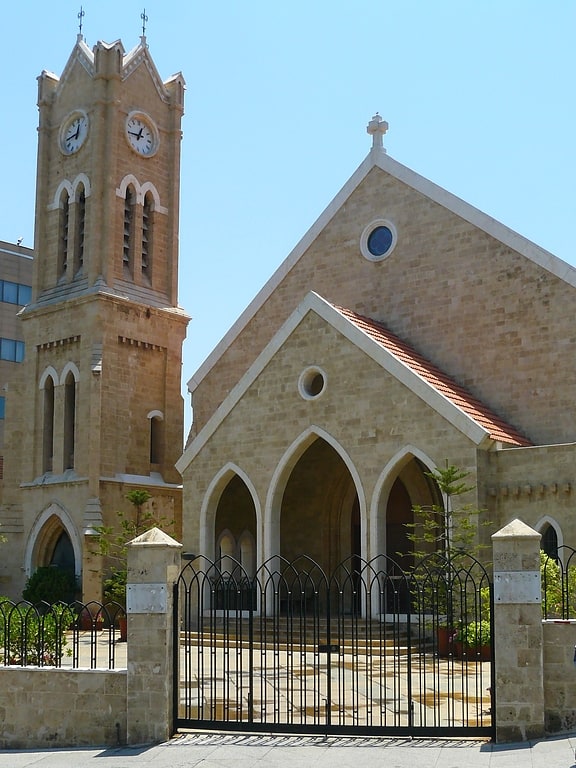
Evangelical church in Beirut, Lebanon. The National Evangelical Church of Beirut is a reformed church in Beirut, member of the National Evangelical Church Union of Lebanon.[14]
St. Louis Cathedral
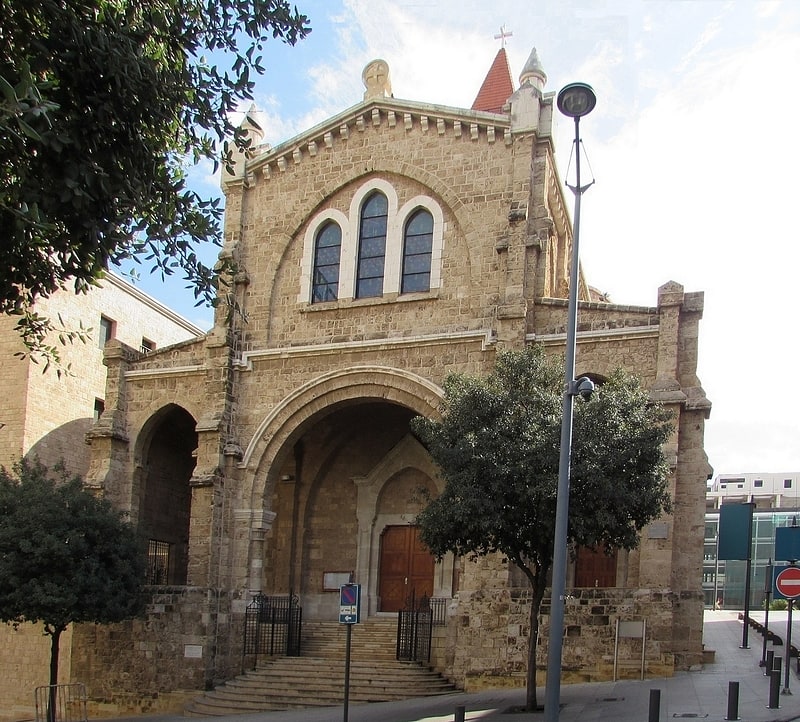
Church in Beirut, Lebanon. The St. Louis Cathedral also Saint Louis Capuchin Cathedral is a Latin Catholic church in downtown Beirut, located to the north of the Grand Serail and Council of Reconstruction and Development. Built in 1864 by the Capuchin missionaries and named it in the honor of King Louis IX of France. The church is highly noticeable for its sandstone facades, rose-colored wooden windows, and its new towering campanile.[15]
Sassine Square
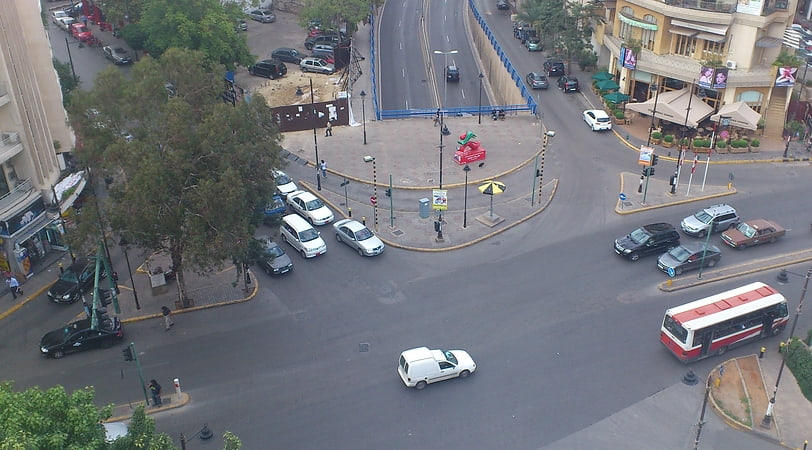
Sassine Square is a town square in Beirut, Lebanon, it is one of the most prominent urban areas of East Beirut, Lebanon. It is located in the Achrafieh district.
Historically and popularly named after an old and prominent family of Achrafieh, Sassine Square was officially inaugurated in the early '90s under the auspices of President Elias Hrawi, Prime-Minister Rafic Hariri, Member of Parliament Michel Sassine, and the Municipal Council of Beirut City.
Sassine Square is reputed to be a key social and commercial focal point of the Lebanese capital. Beyond being a residential area with a large pedestrian and transportation hub, it hosts renowned commercial and leisure centers, including the ABC Mall, attracting large numbers of visitors and tourists.
Like the ancient Agora of the Greek towns, Sassine Square is becoming a meeting place where all the Lebanese from different cultures and confessions communicate daily.
On 19 October 2012, a car bomb exploded in an alley leading to Sassine street next to Sassine Square killing 8 including Wissam al-Hassan and injuring 78.[16]
Maghen Abraham Synagogue
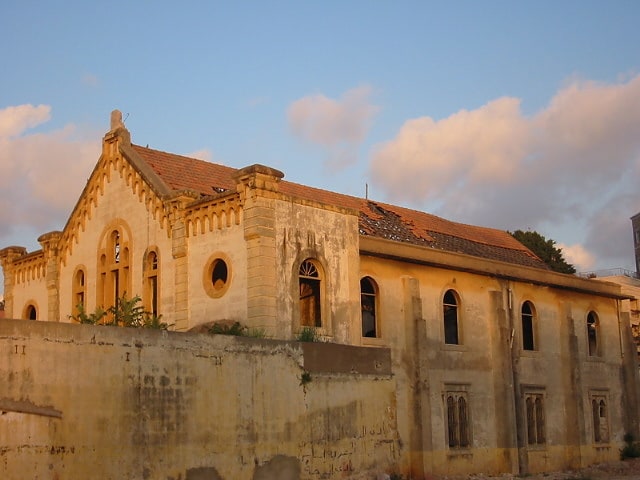
Also known as: كنيس ماغين أبراهام
Synagogue in Beirut, Lebanon. The Maghen Abraham Synagogue is one of the main synagogues in Lebanon.
Located in the Jewish district of Wadi Abu Jamil in downtown Beirut, the synagogue was damaged by IDF during the Lebanese Civil War. Restoration of the synagogue began in May 2009. In August 2010, renovations were nearing completion, with finishing touches being made to the interior of the building. Haaretz reported that "synagogue restored to glory" and "has been renovated beautifully". The synagogue reopened, but was slightly damaged in the 2020 Beirut explosions.
Maghen Abraham has a daughter synagogue in Canada, Congregation Maghen Abraham.[17]
Berytus
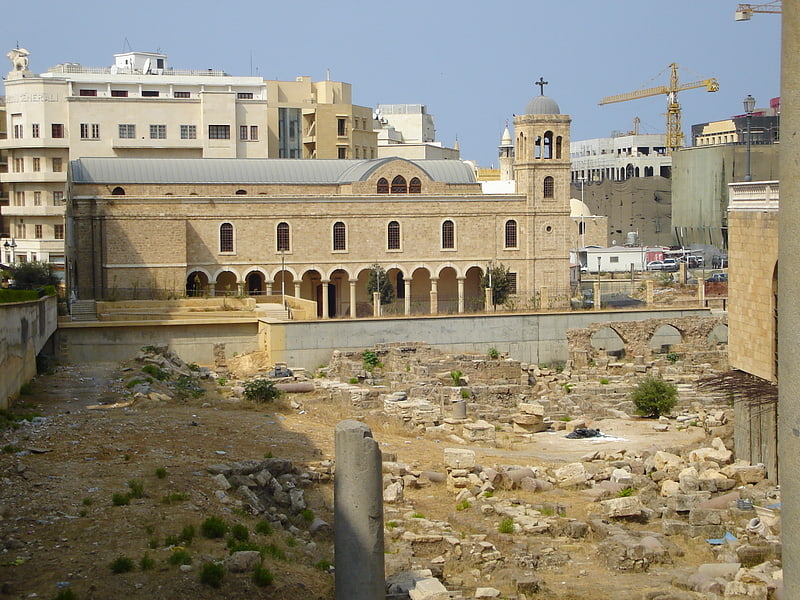
Berytus, briefly known as Laodicea in Phoenicia or Laodicea in Canaan from the 2nd century to 64 BCE, was the ancient city of Beirut from the Roman Republic through the Roman Empire and Early Byzantine period/late antiquity. Berytus became a Roman colonia that would be the center of Roman presence in the eastern Mediterranean shores south of Anatolia. The veterans of two Roman legions under Augustus were established in the city, that afterward quickly became Romanized and was the only fully Latin-speaking city in the Syria-Phoenicia region until the fourth century. Although Berytus was still an important city after earthquakes, around 400 AD Tyre was made the capital of the Roman province of Phoenicia. "Of the great law schools of Rome, Constantinople, and Berytus", the law school of Berytus stood "pre-eminent". The Code of Justinian was mostly created in this school.[18]
Robert Mouawad Private Museum
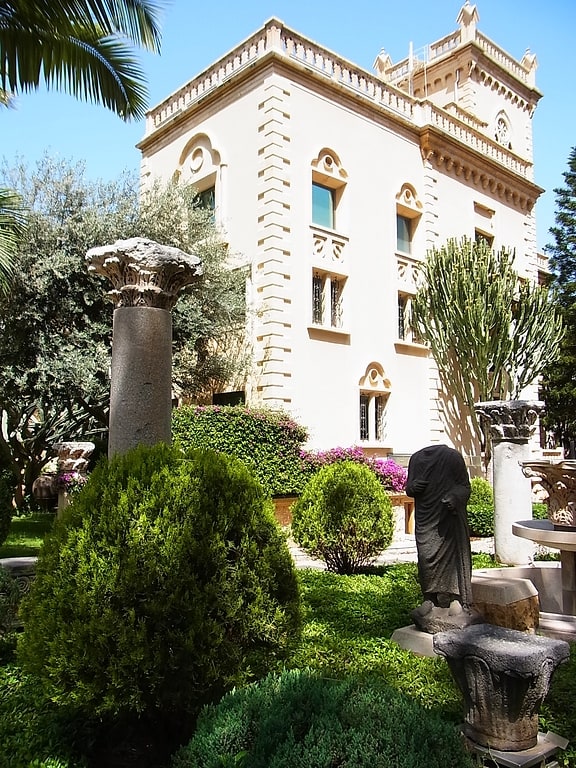
Also known as: متحف روبير معوض الخاص
Museum in Beirut, Lebanon. The Robert Mouawad Private Museum is a private residence in Beirut's Zokak el-Blat quarter that was turned into a museum by the Lebanese businessman Robert Mouawad. The palace was built in the neo-gothic style by the Lebanese politician and art collector Henri Philippe Pharaoun in 1891. The museum was inaugurated on May 11, 2006. It houses objects of value reflecting a mix of artistic oriental and occidental cultures, and a rare collection of books, Chinese porcelain, ceramics, and other significant objects. The palace's architecture and design reflects Pharaoun's infatuation with Islamic Art and decorative wooden panels that date back to the 17th century, especially after his repeated travels to Syria. Other displayed artifacts include Byzantine mosaics, Roman marble sculptures, jars and jugs, historical columns, pottery, ancient weapons, unique carpets, sophisticated jewelry pieces, rare precious stones, Melkite Catholic icons, and preserved manuscripts.[19]
Address: Army road - zokak el blat, Beirut
Al-Omari Grand Mosque
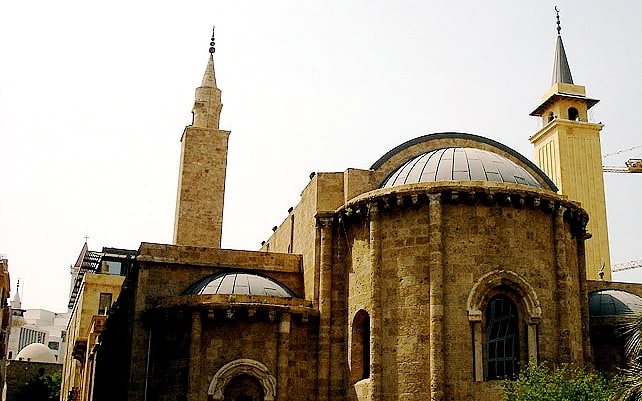
Also known as: المسجد العمري الكبير
Mosque in Beirut, Lebanon. Al-Omari Grand Mosque is a mosque in Beirut Central District, Lebanon.[20]
Address: Maarad St, Beirut
Sanayeh Park
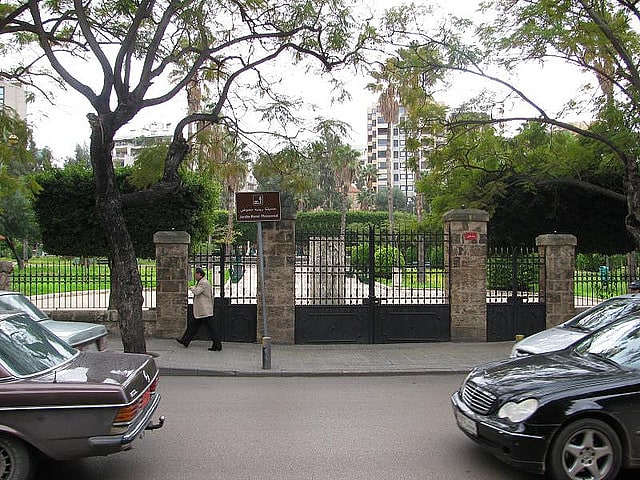
Park in Beirut, Lebanon. The René Moawad Garden known by the public as the Sanayeh Garden is located in the Sanayeh district of Beirut, Lebanon. The garden is one of the oldest public open-air spaces in the capital. Khalil Pasha, commander of the Turkish Sixth Army during World War I ordered the creation of the garden in 1907.[21]
Beit Beirut

Museum in Beirut, Lebanon. Bayt Beirut is a museum and urban cultural center celebrating the history of Beirut and namely the civil war. The cultural center is in the restored Barakat building, also known as the "Yellow house", a historic landmark designed by Youssef Aftimus.[22]
Address: Independence Street (Elias Sarkis Avenue), Beirut
Horsh Beirut
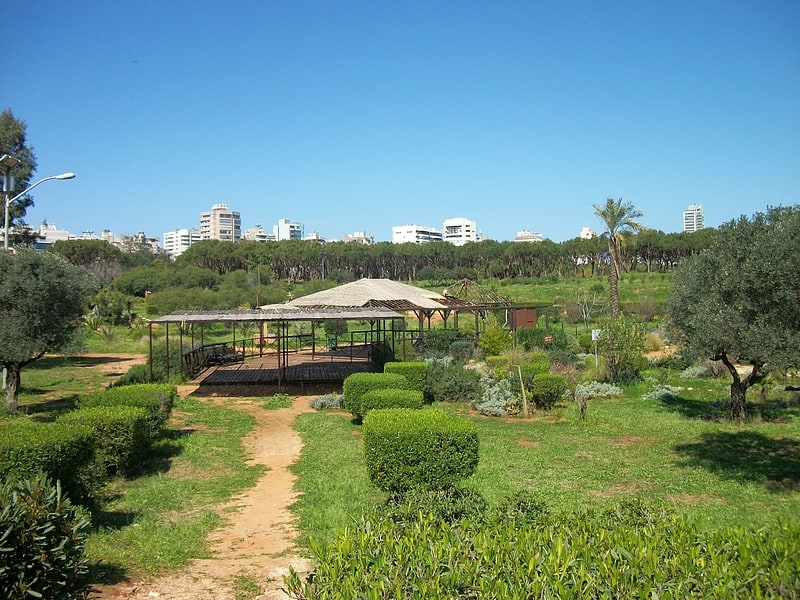
Park in Beirut, Lebanon. Horsh Beirut is an urban park in the heart of the capital of Lebanon, Beirut. The urban park is also known as Horsh El Snaubar. The park covers about 0.3 square kilometres of green space within municipal Beirut.[23]
Address: Sami El Solh Rd, Beirut
Saifi Village
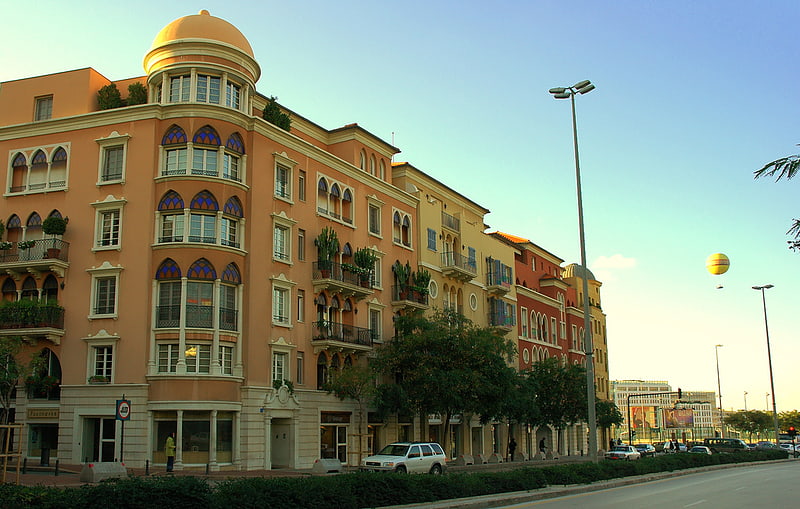
Neighbourhood in Beirut, Lebanon. Saifi Village is a residential upscale neighbourhood in Beirut, Lebanon. Saifi Village is located at the southeastern periphery of Centre Ville. The village is bordered by Rue Charles Debbas to the south, Rue George Haddad to the east, Rue Gouraud to the north, and Rue Ariss & Kanaani to the west. Its location is at the beginning of the former Green Line, the main frontline in Beirut during the Lebanese Civil War.
The neighborhood was completely destroyed during the war in Lebanon. However, private company Solidere has rebuilt the neighbourhood in a vernacular style that seeks to be somehow reminiscent of French colonial buildings. It was initially planned by French architect François Spoerry, and includes buildings by prominent Lebanese architects such as Nabil Gholam. Saifi Village is an example of a New Urbanist-style neighbourhood with cobblestone streets, apartment buildings, town houses, and shops. The shops range from a combination of designer shops to car dealerships such as Ferrari. It is also the home of a few art galleries and new uprising Lebanese designer shops, including Bokja Design, Nada Debs, and Vick Vanlian Gallery. The village also includes gardens that are filled with seasonal shrubs, flowers, and trees. It is also a place for family gatherings due to the presence of children play grounds and wooden benches and fountains for the full park experience. Extensive deployment of private security is, however, a serious deterrent for undesired lower-income families and visitors, as in other Solidere-managed development projects, such as Zaytounay Bay. The neighbourhood is also known as Le Quartier des Arts due to its numerous art galleries, antique store, artisan shops, and speciality boutiques. Every Saturday morning, farmers sell their fresh organic produce and other products at Souk el Tayeb in a little square in the village. Its name "Saifi Village" comes from the Arabic word "summer" because summer is one of the nicest seasons in the country and the best time for tourists to come visit the village. Other similar projects are "Saifi Khan" and "Saifi Square".[24]
Address: Quartier des Arts, Beirut
Beirut Art Center
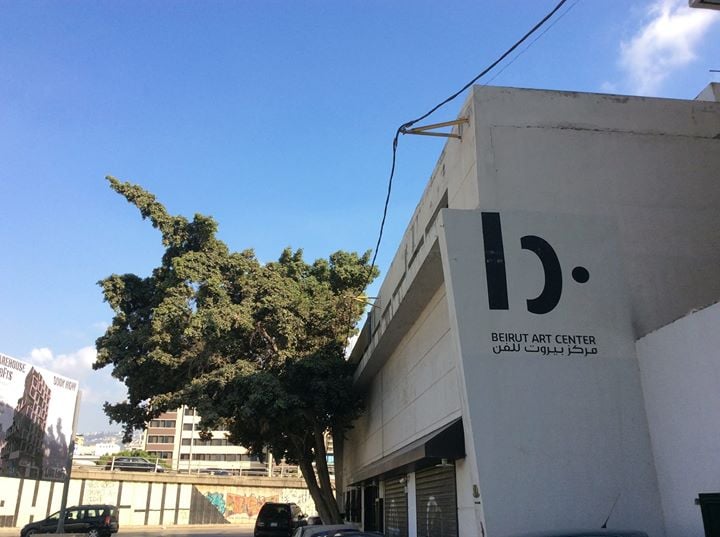
Art center in Beirut, Lebanon. Beirut Art Center is a space for exhibiting contemporary art in Beirut, Lebanon[25]
Archaeological Museum of the American University of Beirut
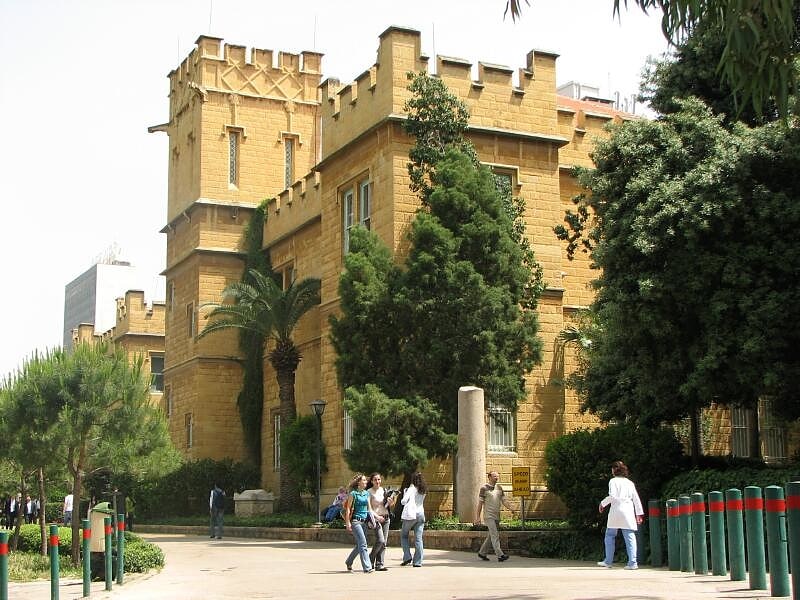
Museum in Beirut, Lebanon. The Archaeology Museum of the American University of Beirut in Beirut, Lebanon is the third oldest museum in the Near East after Cairo and Constantinople.[26]
Address: Rue. Bliss (Rue.33), Beirut
Sursock Palace
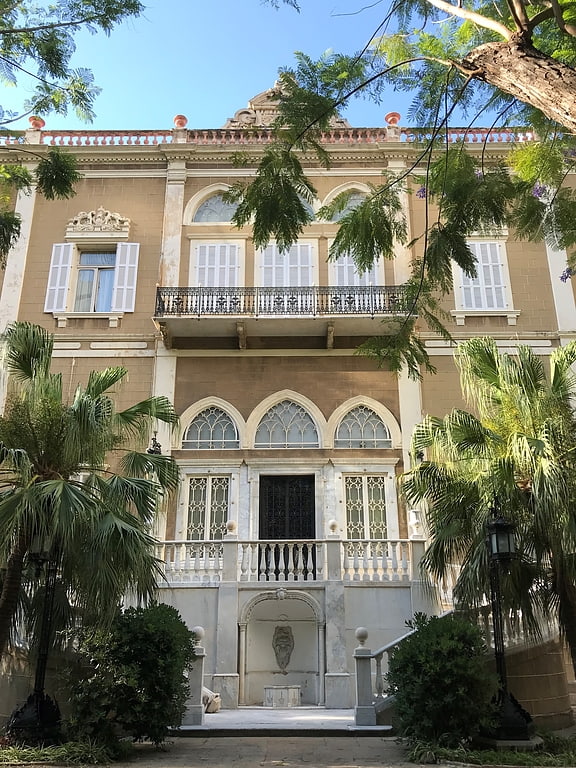
Museum in Beirut, Lebanon. Sursock Palace, is a grand residence located on Rue Sursock in the city of Beirut in Lebanon. The palace, which was completed in 1860 by Moïse Sursock, was owned by Lady Cochrane Sursock, an advocate of preserving historic buildings in Lebanon.
The palace, a symbol of the Sursock family's rich history, is located on the historic Sursock Street, in the Rmeil district of Beirut. Sursock House is surrounded by gardens that can be hired for special events, such as weddings. The palace faces the Sursock Museum, a villa from 1912 that was bequeathed to the city of Beirut by Nicolas Sursock and became a museum in 1961. After the Lebanese Civil War, it took 20 years of careful restoration to restore the palace before it reopened in 2010.
It was damaged during the 2020 Beirut explosions, but there are plans to rebuild the palace.[27]
Lee Observatory
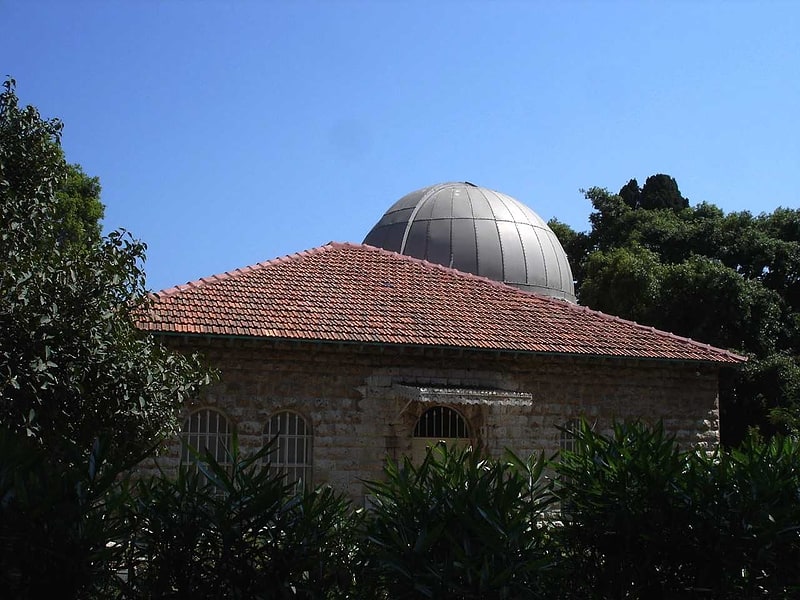
Astronomical observatory. The Lee Observatory is an astronomical observatory on the campus of the American University of Beirut in Beirut, Lebanon. Opened in 1873, it is the first and the oldest observatory of the Middle East in modern times.
Nowadays the observatory has only an academic role.[28]
Antabli Fountain
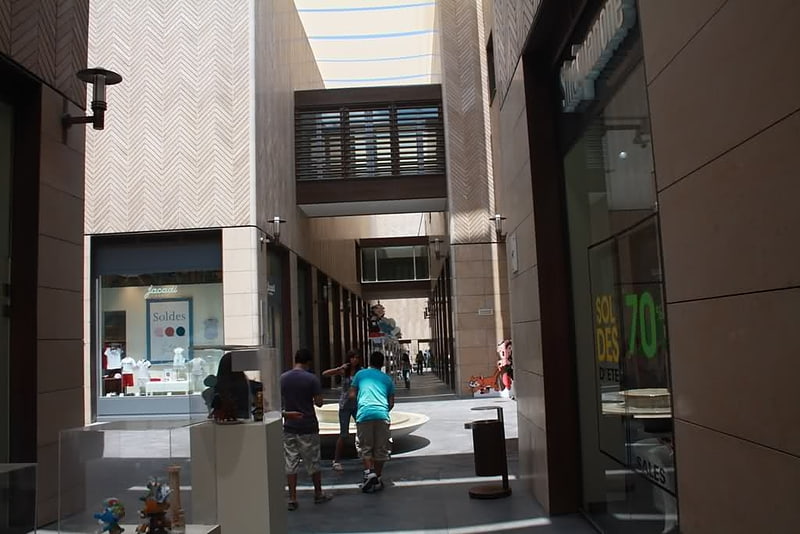
Antabli Fountain is a water fountain in Souk Ayas in downtown Beirut, Lebanon. The fountain, originally Ottoman, became associated with the sweets and drinks prepared by the Antabli family. Ahmad Mohamad Antabli started selling sweets and drinks alongside the fountain aged 12, in 1933. It remained a popular destination in Souk Ayas until 1975.[29]
Ras Beirut
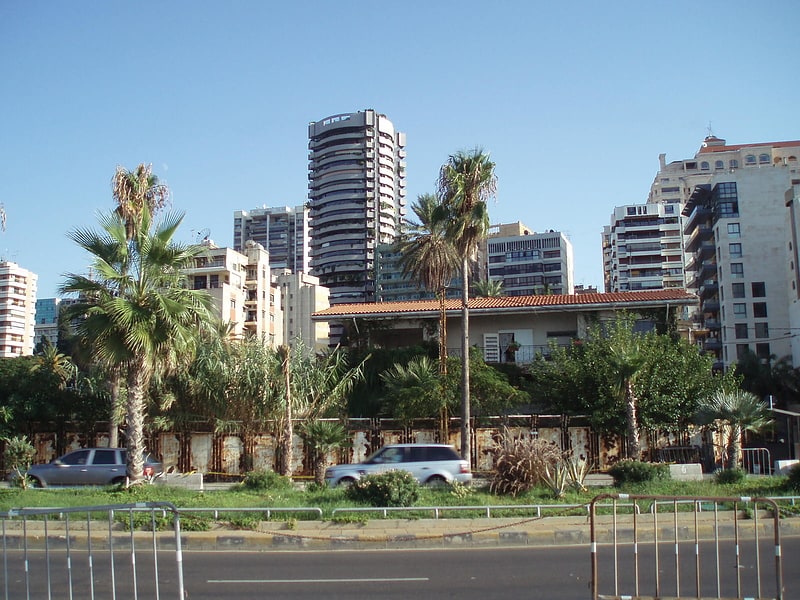
Also known as: رأس بيروت
Residential neighborhood in Beirut, Lebanon. Ras Beirut is an upscale residential neighborhood of Beirut. It has a mixed population of Christians, Muslims, Druze, and secular individuals. Ras Beirut is home to some of Beirut's historically prominent families, such as the Bekhazi Rebeiz family, the Daouk family, the Itani family, the Sinno family, and the Sidani family family, the Beyhum family and others. Included in the area are a number of international schools and universities, including the American University of Beirut and International College Beirut.[30]
Parliament of Lebanon
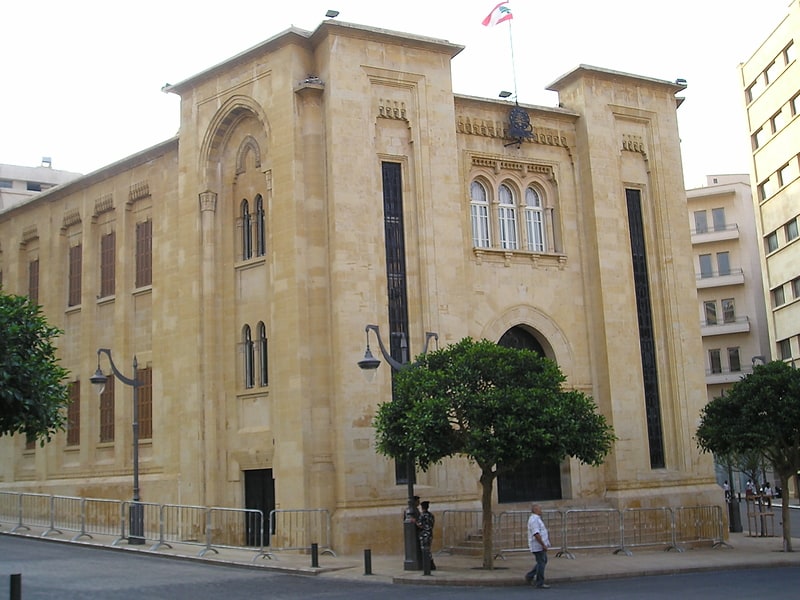
Also known as: مجلس النواب اللبناني
The Lebanese Parliament is the national parliament of Lebanon. There are 128 members elected to a four-year term in multi-member constituencies, apportioned among Lebanon's diverse Christian and Muslim denominations but with half of the seats reserved for Christians and half reserved to Muslims per Constitutional Article 24. Lebanon has universal adult suffrage. Its major functions are to elect the President of the republic, to approve the government, and to approve laws and expenditure.
On 15 May 2013, the Parliament extended its mandate for 17 months, due to the deadlock over the electoral law. And, on 5 November 2014, the Parliament enacted another extension, thus keeping its mandate for an additional 31 months, until 20 June 2017, and on 16 June 2017 the Parliament in turn extended its own mandate an additional 11 months to hold elections according to a much-anticipated reformed electoral law. On 6 May 2018, a new parliament was elected in the 2018 general election, thus ending the mandate of the 2009 parliament who extended it for about 5 years.[31]
Brummana
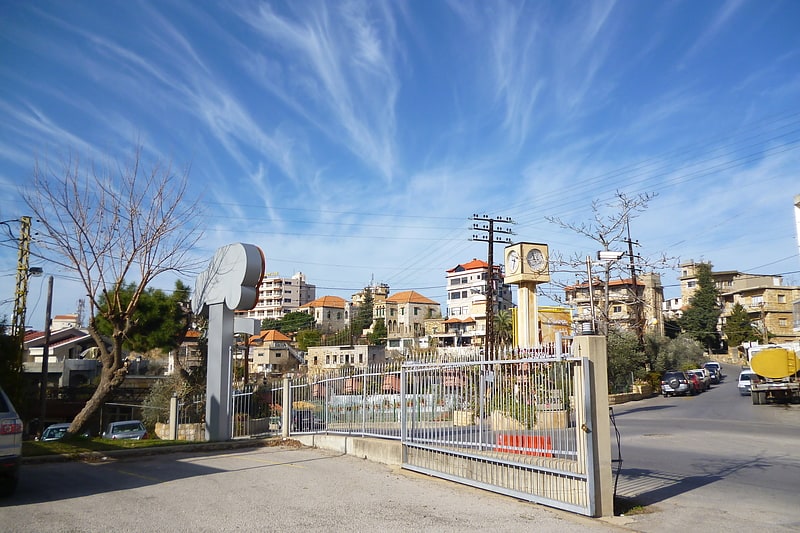
Also known as: برمانا
Town in Lebanon. Brummana is a town in the Matn District of the Mount Lebanon Governorate in Lebanon. It is located east of Beirut, overlooking the capital and the Mediterranean. Brummana has long been a summer destination for visitors and locals. It is also the green lung of the region, with many pine trees lining its streets.[32]
Grand Serail
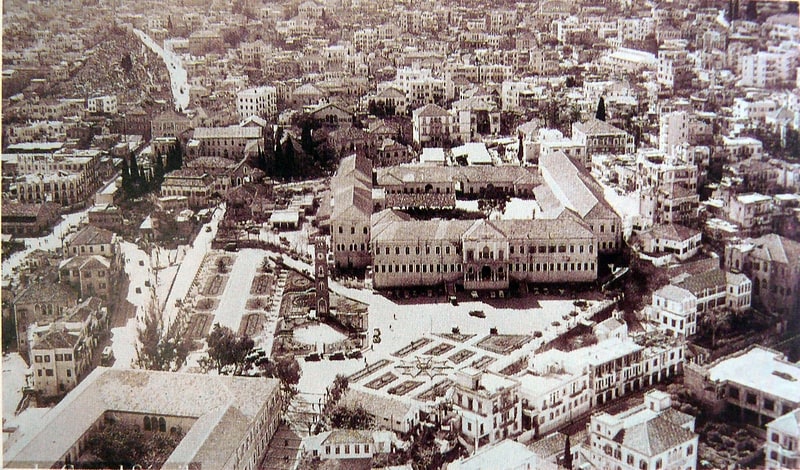
Also known as: السراي الكبير
Building in Beirut, Lebanon. The Grand Serail is the headquarters of the Prime Minister of Lebanon. It is situated atop a hill in downtown Beirut a few blocks away from the Lebanese Parliament building. The Grand Serail is a historic building, the most important of three Ottoman monuments on the Serail hill. The other two are the Council for Development and Reconstruction and the Hamidiyyeh clock tower. This historic building has earned its importance through successive roles which it held since 1832[33]
Hope for Peace Monument
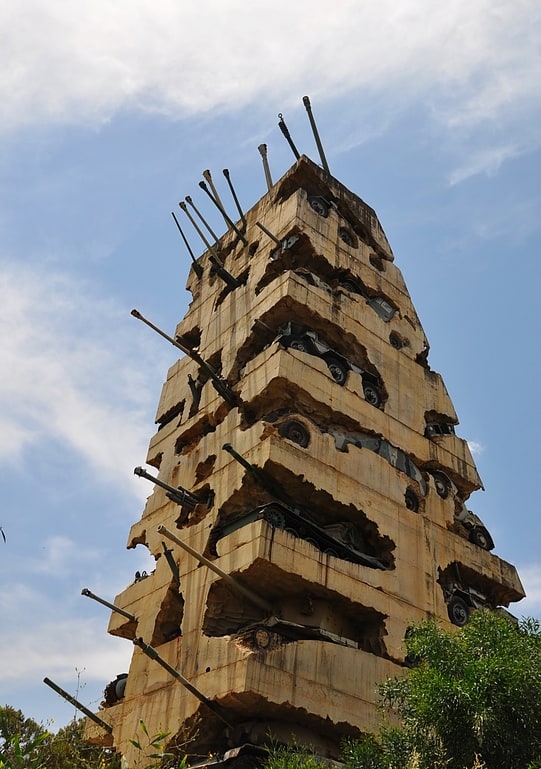
The Hope for Peace Monument is a monument in Yarze, Lebanon, made to celebrate the end of the Lebanese Civil War in 1990. It was designed by the French-born American artist Armand Fernandez. It is located near the Ministry of National Defence. It was built in 1995. It is the official monument to commemorate the end of the civil war in Lebanon.
The monument is unusual in that it contains 78 military vehicles, from a range of eras and nations. The monument resembles a bombed-out building, with the vehicles positioned in it. The guns of the tanks and military vehicles stick out of it, mostly pointing in one direction.[34]
Port of Beirut
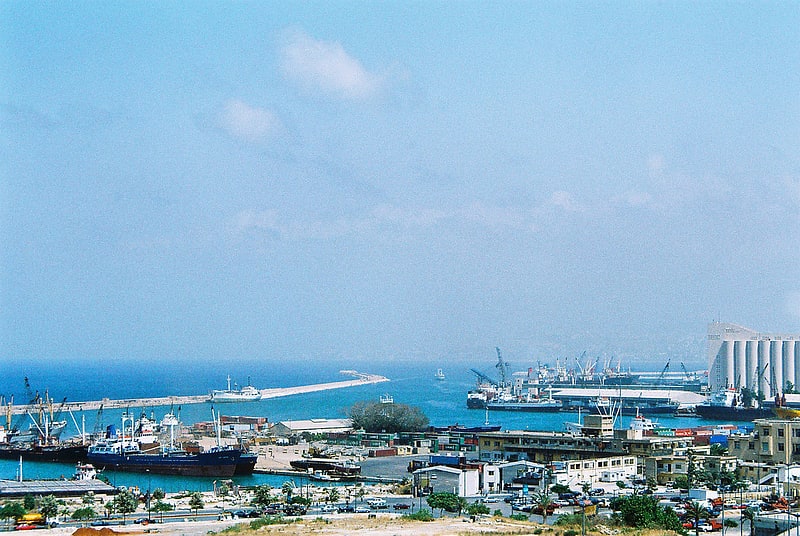
Also known as: مرفأ بيروت
Port authority in Beirut, Lebanon. The Port of Beirut was the main port in Lebanon on the eastern part of the Saint George Bay on Beirut's northern Mediterranean coast, west of the Beirut River. It was one of the largest and busiest ports on the Eastern Mediterranean.
On 4 August 2020, a large explosion, caused by improperly stored ammonium nitrate, occurred at the port, killing at least 221 people, injuring more than 6,000 and rendering 300,000 others homeless. Large sections of the port and its infrastructure were destroyed, including most of Beirut's grain reserves, and billions of dollars in damages were inflicted across the city. The Port of Beirut was forced to close, due to the large-scale damage caused by the explosions, with cargo being redirected to smaller ports, such as Tripoli and Tyre. Prior to the disaster, about 60 percent of Lebanon's imports came through the port, according to an S&P Global estimate.[35]